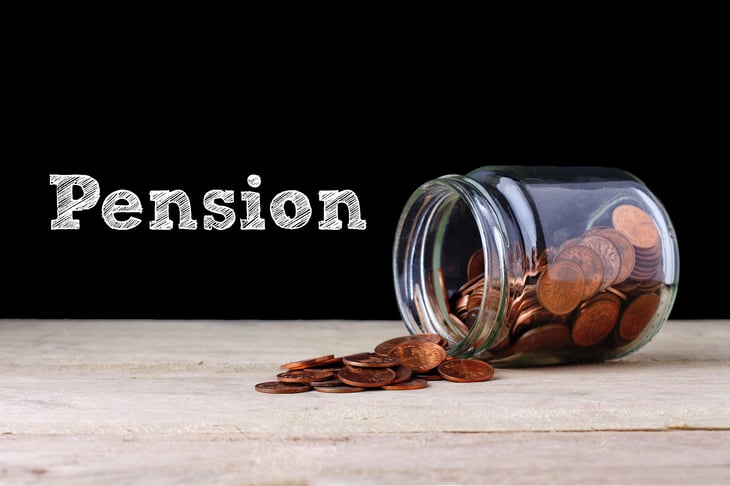
This story originally appeared on NewRetirement.com.
You may have seen the news: Interest rates in the United States are at historic lows. That sounds great. But is it really? What are the effects of low interest rates on your retirement?
The interest rate is the amount a lender charges a borrower to use their money. It is expressed as a percentage of the principal of the loan. It is also the rate a bank pays its savers for keeping money in an account.
Interest rates are determined by a variety of factors:
- The risk level — lenders offer lower rates to borrowers who are low-risk and higher rates to high-risk borrowers
- Market demand for loans
- Inflation
- Money supply
- Monetary policy by federal governments. Governments from Sweden and Japan to the United States have pushed interest rates down to unprecedented levels in order to keep the economy as active as possible.
Today, interest rates are the lowest they have ever been.
Why are they so low? There are many reasons why interest rates are historically low today. The Federal Reserve raises interest rates to cool down an overheated economy, as it did in the late 1970s to curb inflation, and it cuts rates to stimulate the economy. During the recessions in 2000, 2008 and 2020, the Federal Reserve cut interest rates repeatedly to spur economic growth.
Most experts predict that low interest rates will be the trend for the foreseeable future. Following are some pros and cons of low rates.
Pro: Loans are cheaper

If you are borrowing money, the less interest you have to pay on top of repaying the principal, the better off you are.
For example, if you are trying to get a 30-year mortgage for a $150,000 home, the difference between paying 3% and 6% is $96,091. That’s a lot of extra money for a 3% difference!
Low interest rates are also good for people who want to get a reverse mortgage. Once viewed as a loan of last resort, reverse mortgages have gained in popularity as a financial planning tool. They can function as a backup source of funding.
Low interest rate environments make borrowing more attractive. Debt is never a great idea for retirement finances, but low interest makes borrowing more tolerable. Do consider refinancing your mortgage into the lowest possible interest rate, investing in real estate or securing a reverse mortgage as backup financing. Try any of these scenarios in the NewRetirement Planner to assess the impact.
Con: Reduced passive income on saving

Very low interest rates make saving your money in a checking or saving account not very profitable.
In fact, depending on inflation rates, earning low interest on your money can be akin to throwing your money out the window. You see, if your money is earning 2% interest and inflation rises at 2.5%, then in 10 years’ time you’ll be able to buy less with your savings then you could now.
Make sure that your overall return on all of your assets is at least higher than the inflation rate. Use the NewRetirement Retirement Planner to see your current and future net worth. You can also assess how quickly your savings grow (or get used) over time.
Con: Lower returns on certificates of deposit and bonds

Savings accounts aren’t the only victims of lower interest rates. Other savings vehicles like certificates of deposit and bonds that might have paid a good amount of money in the past offer no or negligible income now, and they keep your money tied up for a long period of time.
In the 20th century, people bought bonds as a way of guaranteeing income for themselves in retirement. But now a 10-year U.S. Treasury bond that costs $1,000 and pays 0.78% will only earn $7.80 per year in interest.
Bonds and CDs still have a place in retirement plans. People with little risk tolerance and a need to keep cash for emergencies may want to accept lower returns on a portion of their assets.
Pro: Low interest rates lead to inflated stock prices

The low interest rates for the last 10 years have been the fuel driving stock prices higher and higher. Anyone who started buying stocks in 2009 knows how great stock market returns have been for their bottom line.
People who kept their savings in cash after 2009 instead of investing it in the stock market because they were afraid of losing money have instead missed out on an opportunity to grow their assets and set themselves up for financial independence.
Don’t let stock volatility scare you. Keeping all your money in the bank or in ultra-safe U.S. Treasury bonds is a recipe for seeing your actual buying power in retirement get eaten up by inflation. Set aside a fixed percentage of your retirement savings to buy growth stocks, or hedge against uncertainty by buying an index mutual fund or ETF.
Most importantly, don’t sell your stocks when markets are spiraling down. Selling bonds in your portfolio for cash is a better short-term solution, which may buy time for your stock investments to recover.
Better yet, simply have a well-diversified portfolio and a clear written plan like an investment policy statement that defines what to do with your assets in anticipation of various economic scenarios.
Con: Low interest rates make investors chase riskier returns

Because of low interest rates (and other factors), the stock market has mostly been going like gangbusters. And in times like these, it can be easy to get swept up in what might be rational or irrational exuberance.
However, the housing bubble and earlier stock market crashes should be lessons — particularly for those of you who are between 10 and 15 years away from retirement — that if you have all your eggs in one basket, you can find yourself in a very dangerous place without funds to live on in retirement if something goes wrong.
Blend growth with safety by using a bucket strategy for your investments. With a bucket strategy, you create different buckets of money based on your goals and invest each bucket into an appropriate investment vehicle to achieve your goals. You basically want to protect money you need — especially funds you need in the short term. And, take more risks with slush funds or money you won’t use for quite some time.
Model different rates of return for different portions of your savings in the NewRetirement Planner. Find the right asset allocation mix for your spending and longevity needs.
Con: Insurance costs can go up

Insurance companies typically take your premiums, invest them and hope to make enough to cover whatever costs their clients amass.
However, in this low interest rate environment, insurers won’t be able to cover their liabilities and premiums will need to rise.
Think carefully about your insurance needs and be prepared for rising costs.
Con: Pension funds are at risk

Like insurers, pensions need a range of investments. And, if they can’t get necessary returns on assets like bonds, then there is a real risk that they won’t be able to deliver on the promised income.
If you are lucky enough to have a pension, you will want to talk to your HR office about the solvency of this asset. You are likely counting on that money, but many public pensions are woefully underfunded and the low interest rate environment is exacerbating an already difficult situation.
The bottom line

The key to managing the “new normal” of low interest rates is to be aware of them and all the ways they can impact your financial security now and into the future.
You might want to use the NewRetirement Planner to:
- See what your savings will look like with 10 or 20 years of 2% versus 7% returns in different accounts or assets classes.
- Play with different asset allocation strategies.
- Consider rising insurance costs.
- Evaluate refinancing options.





Add a Comment
Our Policy: We welcome relevant and respectful comments in order to foster healthy and informative discussions. All other comments may be removed. Comments with links are automatically held for moderation.